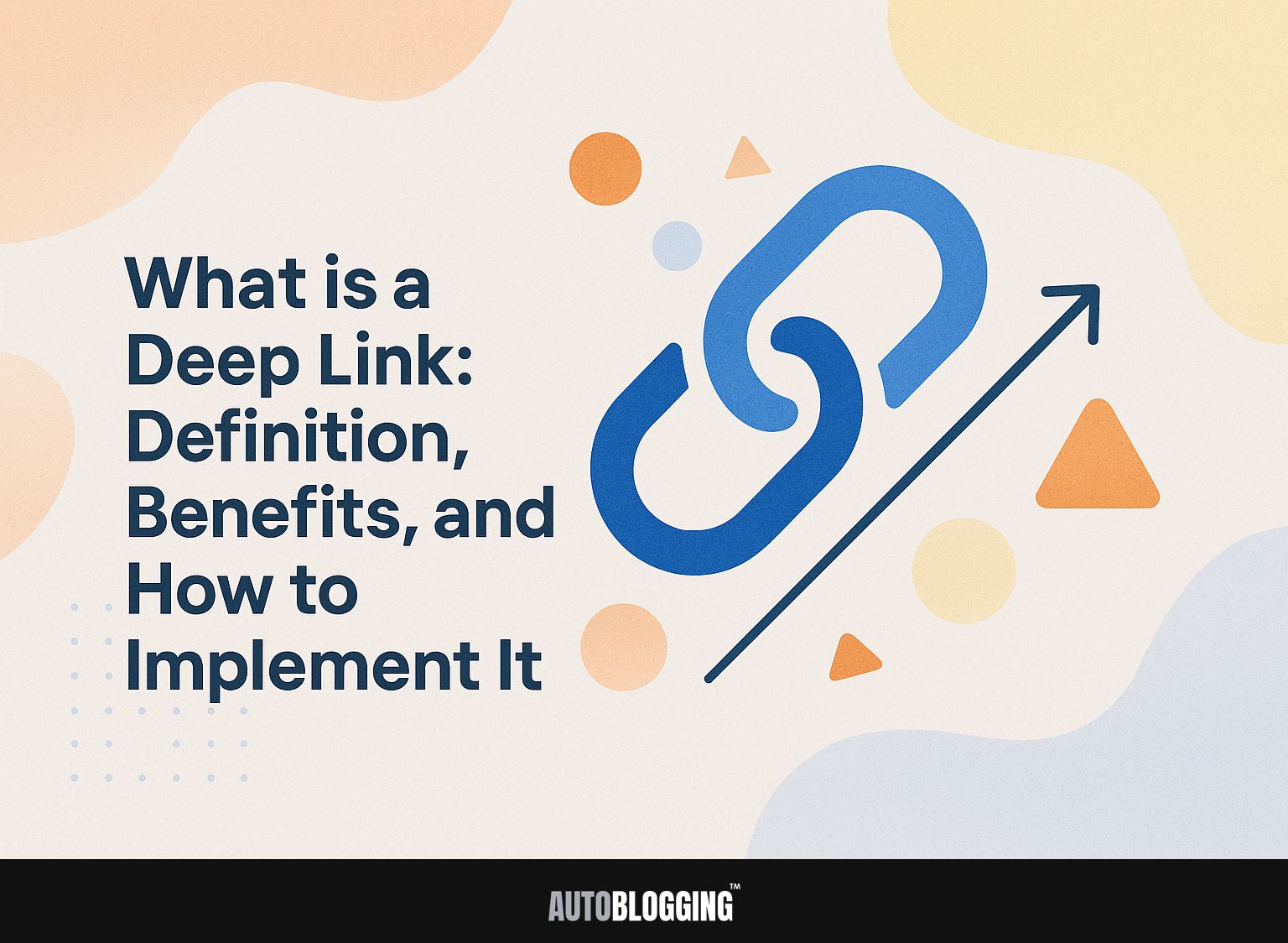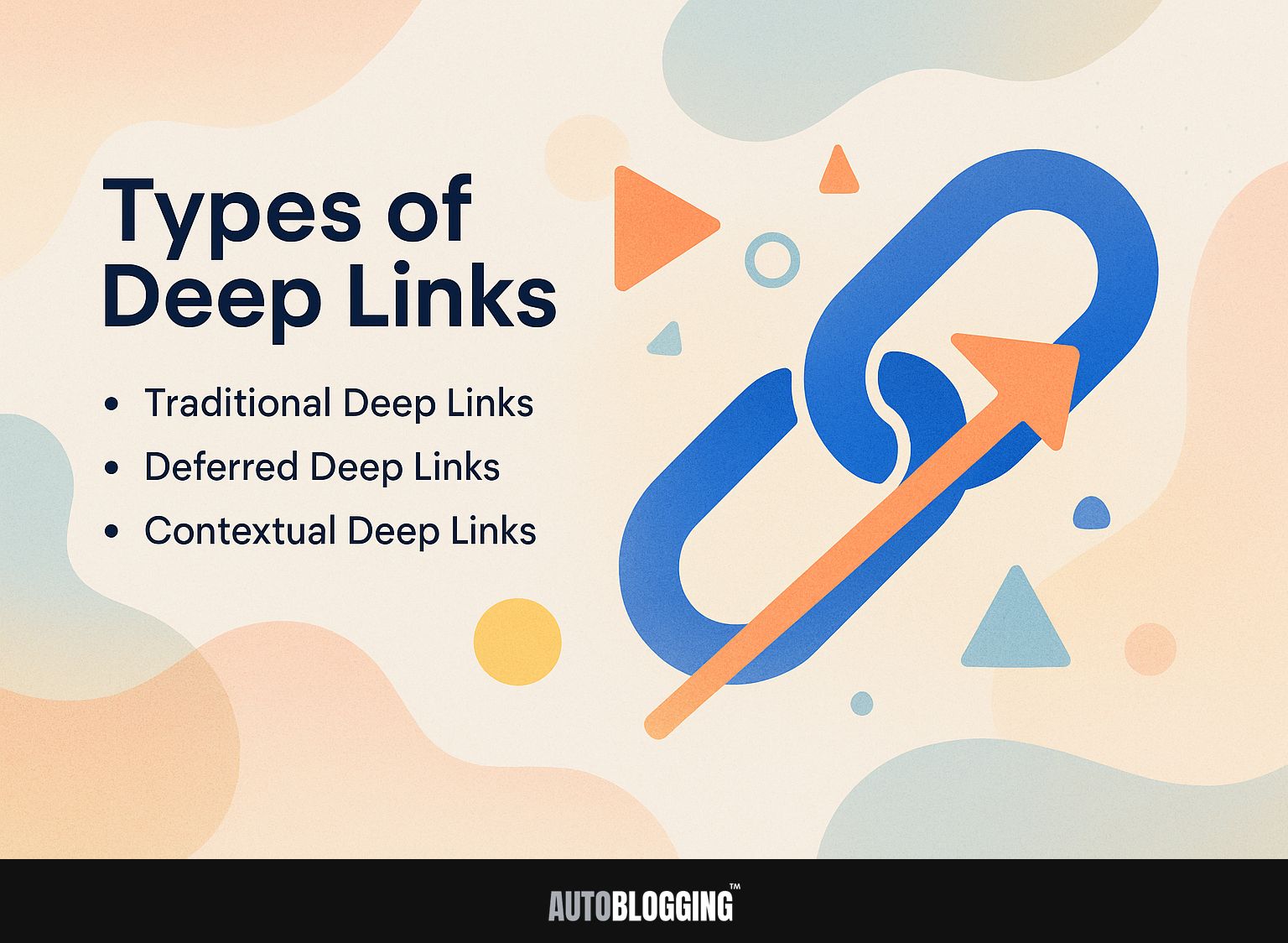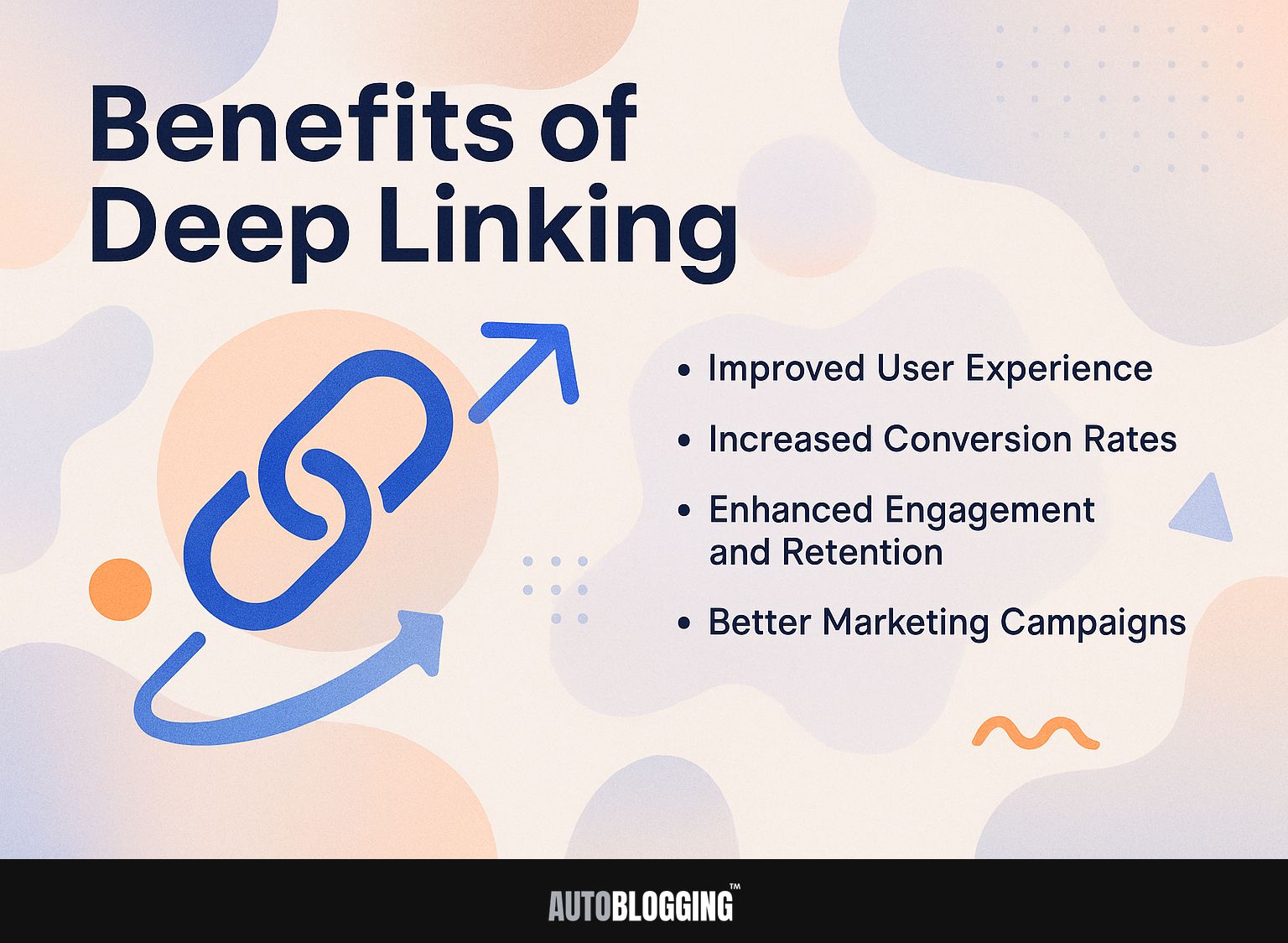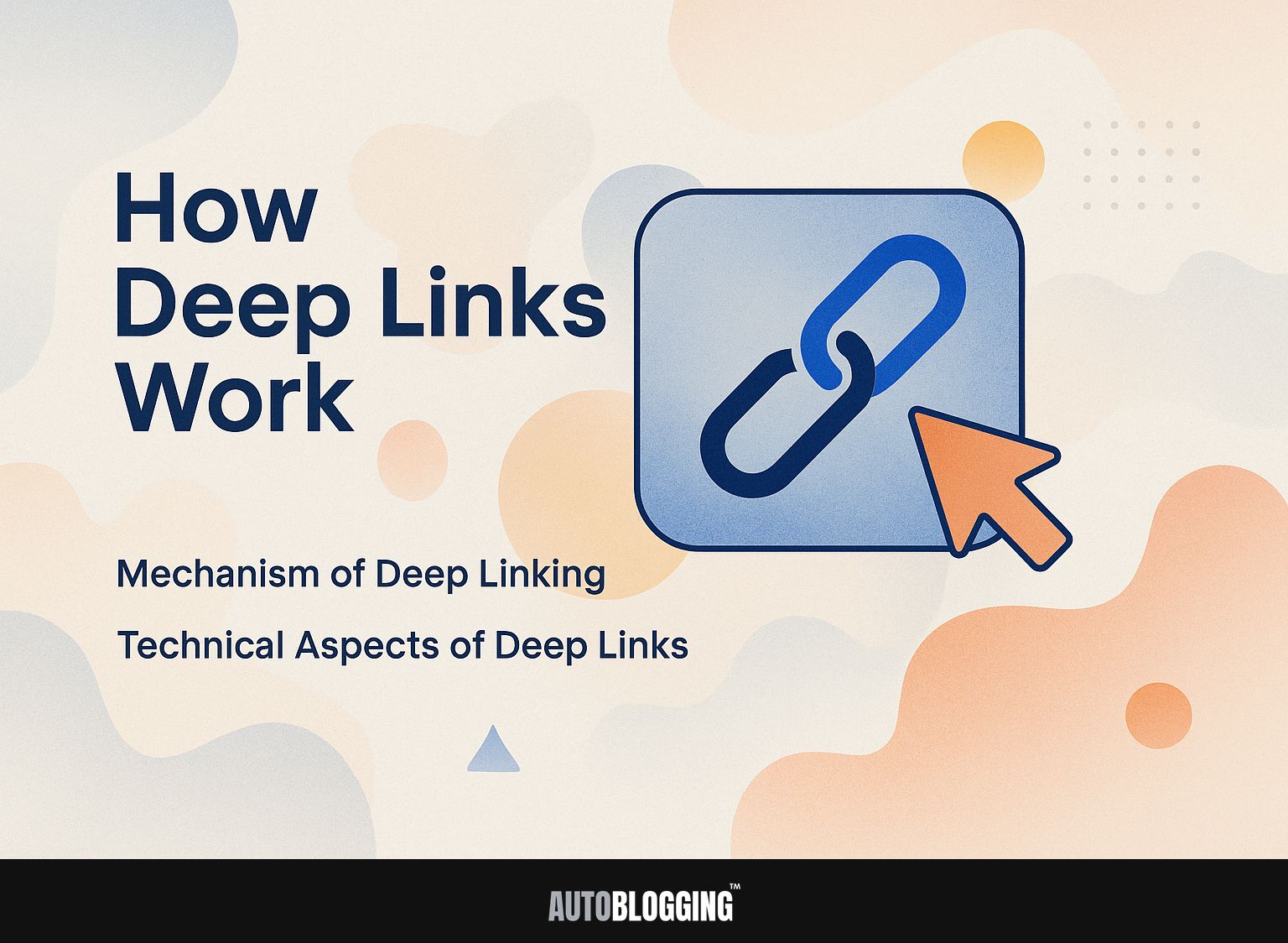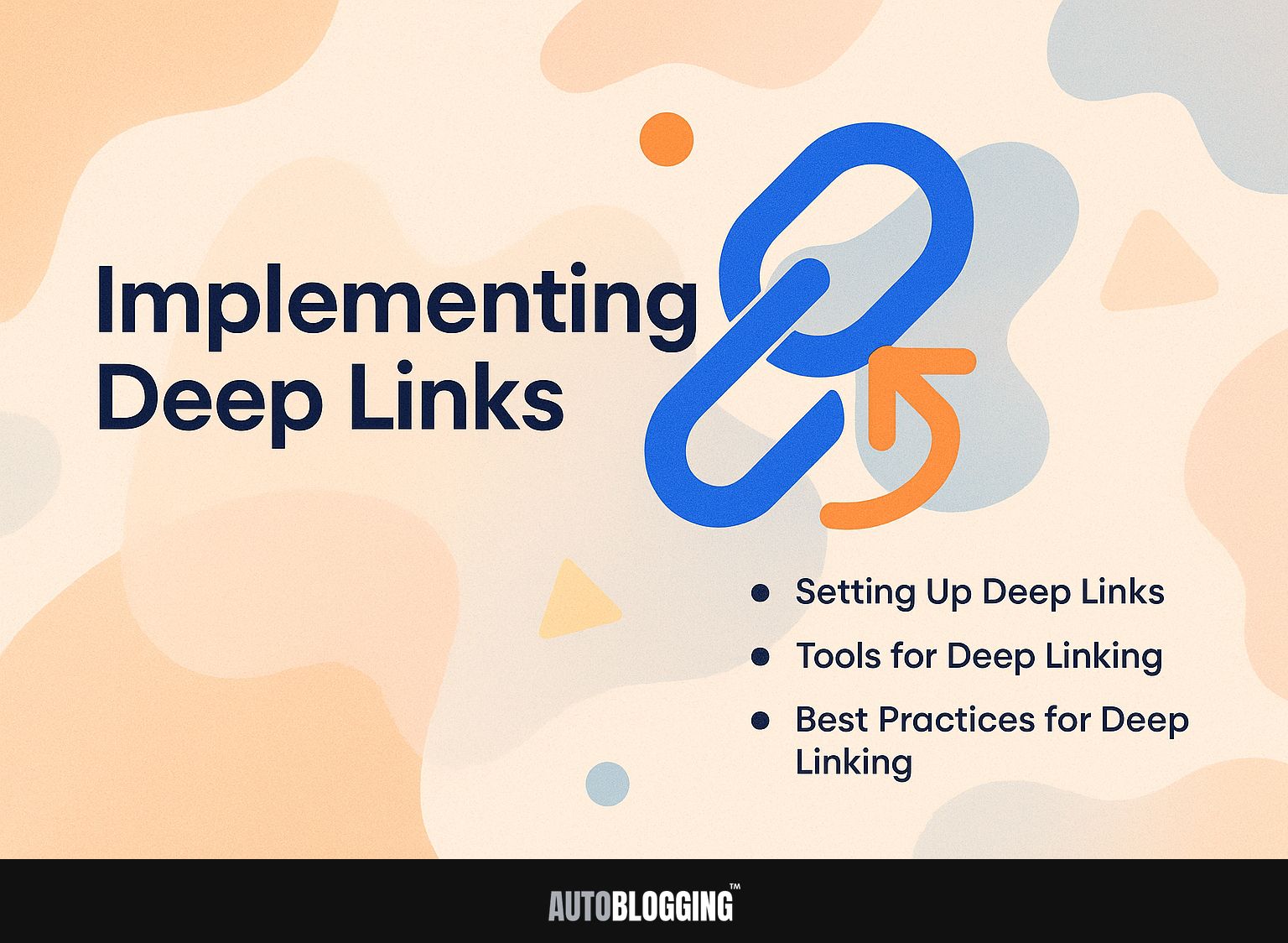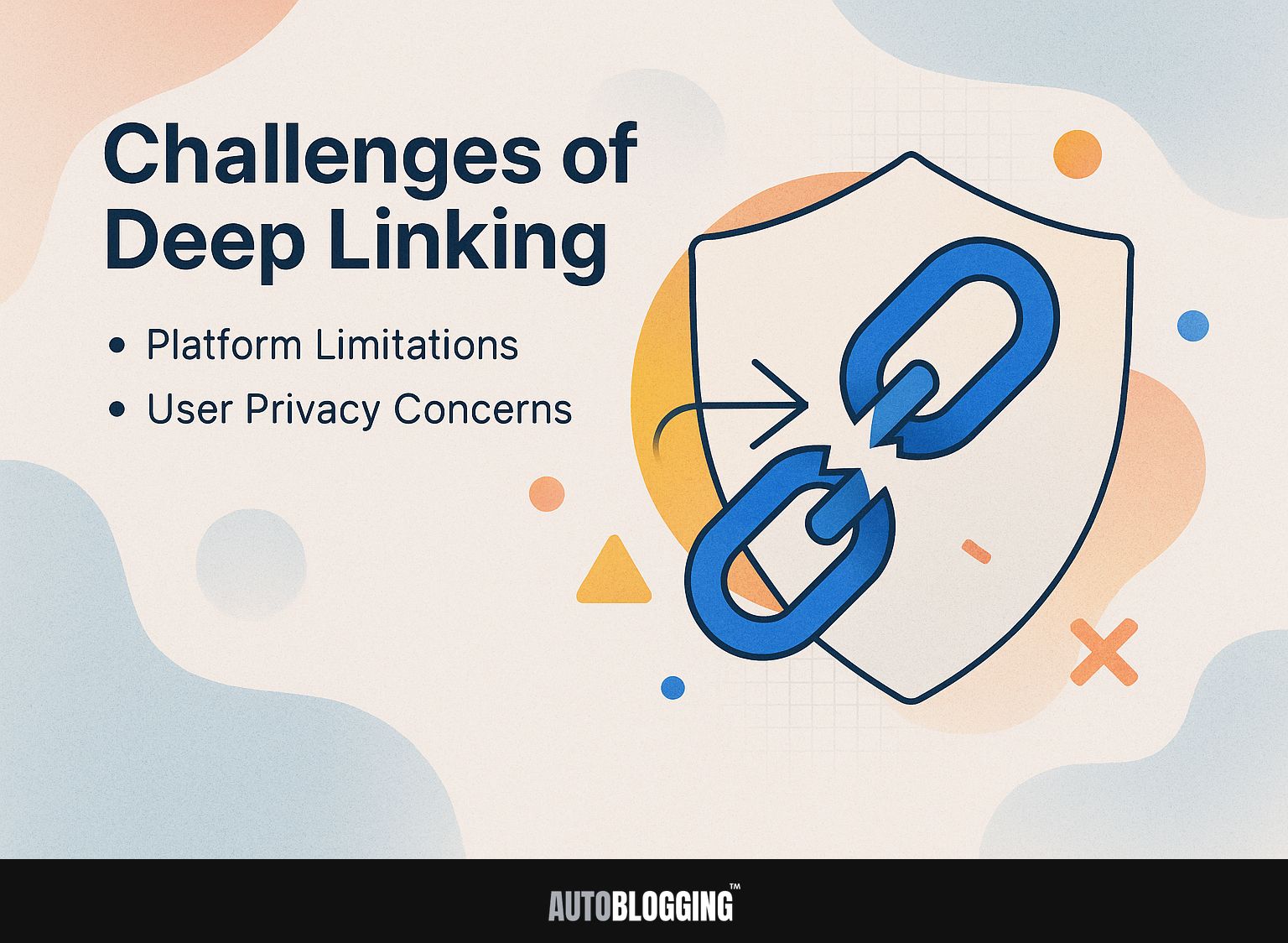Using deep linking can greatly improve your mobile app strategy. Deep linking directly connects users to particular content in your app, improving the user experience and increasing conversion rates for app marketers. Platforms like Facebook use this effective tool to increase user interaction. In this article, we’ll explain deep linking, look at its advantages, and provide practical steps to improve your mobile app’s performance.
Key Takeaways:
- Deep links make the user experience better, help turn more visitors into customers, keep users interested, and make marketing efforts more effective.
- There are various deep link types: traditional, deferred, and specific.
- To implement deep links, one must set them up, use tools, and follow best practices while being aware of limitations and privacy concerns.
Contents
1. Definition of Deep Links
Deep links allow users to go straight to certain sections of a mobile app using special URI formats, making it easier to move around and use the app.
For example, a retail app can use deep links to take users directly to a product page, significantly improving the shopping experience.
Developers can use Branch or Firebase Dynamic Links to make and manage direct links. By using these tools, you can establish settings to monitor how users engage, improving marketing efforts.
A useful step is to add deep links in email promotions that take users directly to limited-time offers in the app, which can increase conversion rates.
2. Importance of Deep Linking
Deep linking greatly increases user retention by creating customized experiences that lead to more involvement in marketing campaigns.
Deep links guide users by taking them straight to particular content inside an app instead of the main homepage. For example, implementing deep links in mobile apps can lead to a 50% increase in user engagement according to industry studies.
Tools like Branch or Adjust provide easy-to-use deep linking options that work well with current app structures.
Using flexible links lets you create customized experiences based on what users do. This helps keep users engaged by up to 40% because they can find the content they are looking for quickly and easily.
Types of Deep Links
There are different kinds of deep links, each designed for specific situations, and they offer distinct features and advantages for people promoting apps. Understanding the basics of Search Engine Optimization can also enhance these strategies (our comprehensive guide on SEO practices provides valuable insights).
1. Traditional Deep Links
Traditional deep links direct users to specific pages within an app but require the app to be installed beforehand, often complicating user acquisition. This limitation can hinder businesses looking to drive traffic effectively.
For instance, if a user taps a deep link for a promotional offer but hasn’t installed the app, they will face a dead end. To mitigate this, consider implementing deferred deep linking. This method redirects users to the app store for installation and then to the intended content afterward.
Tools like Branch or Firebase Dynamic Links make it easy for users to switch from a website to an app. This makes it simple for new users to get started and encourages them to keep using the app.
2. Deferred Deep Links
Deferred deep links enable marketers to direct users to specific app content even if the app isn’t installed, enhancing acquisition strategies.
These links work by detecting whether the app is installed on a user’s device. If not, they direct the user to the app store for installation and then to the intended content upon first launch.
Marketers can use Branch.io to make specific links for campaigns, like sharing a special deal straight in the app. Firebase Dynamic Links allow you to make links that function across various platforms.
Implementing these links can significantly improve user onboarding, leading to better engagement and retention rates.
3. Contextual Deep Links
Contextual deep links offer more than just postponed connections. They give users specific details and customized experiences based on their actions.
For example, if someone clicks on a marketing email about hiking products, a special link can direct them to a custom page displaying hiking boots, gear, and similar content based on their previous site activity. This focused method increases user involvement by providing customized content.
Tools like Branch or Firebase Dynamic Links help make these deep links. They let you monitor user activities and improve content sharing. By personalizing the experience, you increase click-through rates and keep users coming back.
Benefits of Deep Linking
Using deep links can bring significant advantages, such as better user experience, increased conversion rates, and greater user involvement.
1. Improved User Experience
Deep links make it easier for users to move around in mobile apps, lowering barriers and improving the user experience.
A recent study found that deep links can reduce the time users spend searching for content by up to 50% by letting them go directly to what they need.
For instance, when a user clicks a deep link in a social media post, they are taken straight to the relevant section within the app, rather than starting from the homepage. This method significantly increases interaction rates, with statistics showing a 20% rise in user engagement.
Tools such as Branch or Firebase Dynamic Links simplify deep linking, helping to maintain user involvement.
2. Increased Conversion Rates
Well-implemented deep links can increase conversion rates by up to 30%, guiding users directly to relevant content or product pages.
One effective strategy is to analyze your website’s traffic patterns using tools like Google Analytics. Identify high-traffic pages with low conversion rates, then create deep links that lead directly to relevant product pages or content.
For instance, if you notice articles about running shoes receiving significant traffic but not converting, insert deep links to specific sneaker products throughout those articles.
Tools like Ahrefs help find pages in your content plan that are underperforming. This allows you to create targeted links that direct users to buy something or complete important actions.
3. Enhanced Engagement and Retention
Deep linking strategies can improve engagement and retention by showing users content that matches their interests.
App developers can use Branch or Firebase Dynamic Links to make links that take users to particular parts or features in the app.
Research shows that customizing experiences for each user can increase their engagement time by up to 50%. By providing direct links and analyzing user actions, we offer personalized content recommendations, fostering stronger relationships.
Using these methods helps keep users and increases conversion rates, as users are more likely to interact with content that matches their preferences.
4. Better Marketing Campaigns
Deep links help marketing campaigns by sending users directly to specific content, which increases campaign effectiveness.
For example, a recent study revealed that campaigns using deep links achieved a 30% higher click-through rate than those without.
Tools like Branch and Adjust allow marketers to create links that direct users to specific app pages and monitor user activity effectively.
By using these links in email campaigns or social media ads, brands can make user experiences smoother and lower the chances of users leaving the site quickly. As a result, they often see a significant increase in conversions and customer retention.
How Deep Links Work
Knowing how deep links work is important for app developers and marketers to successfully use and track their strategies.
1. Mechanism of Deep Linking
Deep linking uses custom URI schemes to allow direct access to specific app content from outside sources.
These URIs are structured using a specific format, like “myapp://content/item?id=1234”. This format allows users to jump directly to the related content within the app instead of landing on a generic homepage.
For instance, a marketing campaign can use deep links in emails or social media, enabling users to access promotional offers or articles instantly.
Platforms like Branch and App Links make it easier to create and manage these links, which are important for increasing user engagement and keeping users active in mobile apps.
2. Technical Aspects of Deep Links
Core technical components of deep linking are Firebase Dynamic Links, Universal Links for iOS, and Android App Links. These are needed to work on different platforms.
Use Firebase Dynamic Links to quickly connect apps on iOS and Android. This tool allows you to create links that behave according to the platform, guiding users to specific content within your app.
For iOS, configure Universal Links by defining the associated domain in your app’s entitlement file, ensuring that your app opens directly when the link is clicked.
On Android, set up Android App Links by declaring an intent filter in your app’s manifest, specifying the deep link URL. Combining these methods provides a unified experience for users across devices.
Implementing Deep Links
To effectively use deep linking, it’s important to plan carefully, choose suitable tools, and follow best practices to achieve the best results. Related insight: What is Mobile Optimization: Techniques, Importance, and Best Practices
1. Setting Up Deep Links
Setting up deep links involves defining your app’s URI schemes, configuring deep link generators, and integrating with APIs like Firebase.
- Start by determining your app’s URI schemes; for example, use `myapp://’ as a convention for your links.
- Afterwards, tools like Branch.io or Firebase Dynamic Links can simplify the process of making deep links.
- After you create your links, check that they work properly by trying them on different devices and systems.
- Add the links to your current marketing work, such as email campaigns or social media posts, so users can easily go to particular app content.
- This whole process can usually be completed in a few hours.
2. Tools for Deep Linking
There are several reliable tools that help with deep linking. These tools include Branch, Firebase Dynamic Links, and AppsFlyer, each offering various features for marketers.
| Tool Name | Price | Key Features | Pros/Cons |
|---|---|---|---|
| Branch | Free-$99 | Onboarding, analytics, deep links | Great for cross-platform marketing |
| Firebase Dynamic Links | Free | Dynamic link creation, analytics | Simple integration, Google ecosystem |
| AppsFlyer | Based on usage | Attribution tracking, deep links | Comprehensive analytics but complex |
Branch is excellent at offering effective onboarding tools, making it ideal for welcoming new users. Firebase Dynamic Links integrates smoothly with other Google services, making it convenient for teams already using Firebase.
Meanwhile, AppsFlyer is powerful for tracking user acquisition but can be complex, particularly for newcomers. Depending on your specific needs and existing tools, one may serve you better than the others.
3. Best Practices for Deep Linking
Using effective methods in deep linking can greatly improve user experience and make moving between different content smooth.
To maximize the effectiveness of deep linking, consider these best practices:
- Use clear and descriptive URIs, which help users understand the destination.
- Testing on different platforms, like iOS and Android, checks that links work properly on each one.
- Use delayed links for new users to lead them through a customized introduction process.
- Monitoring analytics shows you how users act, which helps you create better linking plans.
- Regularly changing your deep link setups can prevent broken links and help users move through your site, ensuring your content is accessible and user-friendly.
Challenges of Deep Linking
Even though deep linking has benefits, there are still problems that can prevent it from working well and satisfying users.
1. Platform Limitations
Various platforms have their own restrictions on deep linking, which impacts how marketers can use this method to connect with users.
For instance, iOS allows deep linking in apps while Android supports both deep links and App Links, enabling better targeting of users. iOS restricts deep linking to approved domains, limiting potential sources.
Marketers need to improve for these differences: on iOS, use Universal Links by registering your app’s domain with Apple, ensuring a smooth user experience. Conversely, for Android, implement Intent Filters to direct traffic effectively.
Grasping these details is important for planning user acquisition efforts and increasing participation on different platforms.
2. User Privacy Concerns
Worries about user privacy create serious problems for deep linking, because tighter rules and policies change how data is gathered and used.
To deal with these challenges, app marketers should use strategies that follow compliance rules.
- First, make sure your deep linking software includes tools for GDPR and CCPA compliance, like asking users for consent.
- Next, use methods to hide personal data to reduce the risk of exposure. For example, tools like OneLink offer options for linking while respecting user privacy.
- It’s important to frequently revise your privacy policy to match any updates in regulations.
By following these steps, marketers can safeguard user privacy while using deep linking to increase engagement.
Future of Deep Linking
Deep linking is becoming more effective with recent trends and technology improvements, particularly with companies like Google making significant advancements in AI technology.
For instance, Google’s latest AI audio updates are set to enhance the user experience, potentially revolutionizing how deep links are utilized.
1. Trends in Deep Linking
Current trends in deep linking show an increased focus on customizing experiences for users, influencing the direction of mobile marketing. Marketers are using deep linking to improve user experiences.
For example, tools like Branch or Firebase Dynamic Links can recommend content based on user actions. By using these platforms, businesses can design specific routes that guide users straight to app content that matches their interests.
Implementing A/B testing with different deep link strategies allows for optimization based on user engagement metrics, further refining marketing approaches.
As these technologies change, AI will likely play a key role in making these experiences more personalized and automatic.
2. The Role of AI and Machine Learning
AI and machine learning will change deep linking by offering a better look at user behavior and improving how links work.
Websites can examine actions such as how often users click and the paths they take by using predictive analytics. For example, tools like Google Analytics can identify which links generate the most engagement.
Using this information, you can try using flexible links that direct users to content matching their interests, greatly improving retention rates. Algorithms in machine learning can forecast users’ preferences and suggest content specifically for them, improving interaction and enhancing the user experience.
Frequently Asked Questions
1. What is a Deep Link?
A Deep Link is a URL that directs a user to a specific page or content within a mobile app, instead of simply opening the app’s homepage. It allows users to access specific information within an app, providing a seamless user experience.
2. What is the Definition of a Deep Link?
The definition of a Deep Link is a hyperlink that directs users to a specific page or content within a mobile app, rather than just opening the app’s homepage. This URL lets you move around inside an app and gives users a more focused experience.
3. What are the Benefits of Using Deep Links?
Deep Links can offer many advantages to app developers and users. For developers, it can increase user engagement, retention, and conversions. For users, it provides a more convenient and efficient way to access specific content within an app.
4. How Can Deep Links Help Improve App Visibility?
Deep Links can help make an app more noticeable by letting search engines include specific app content, which makes it easier for users to find and access the right information in the app. This can also lead to increased organic app downloads.
5. How Can I Implement Deep Links in My App?
Implementing Deep Links in your app requires adding specific code to your app’s pages and creating a URI scheme that serves as a unique identifier for each page. You can also use third-party tools and platforms to help you implement Deep Links more easily.
6. What Are the Best Practices for Implementing Deep Links?
When setting up Deep Links, make sure they function properly and take users to the right content. It’s important to have a consistent and organized URI plan and to frequently test and update your Deep Links to confirm they work well.

